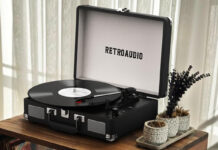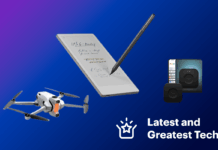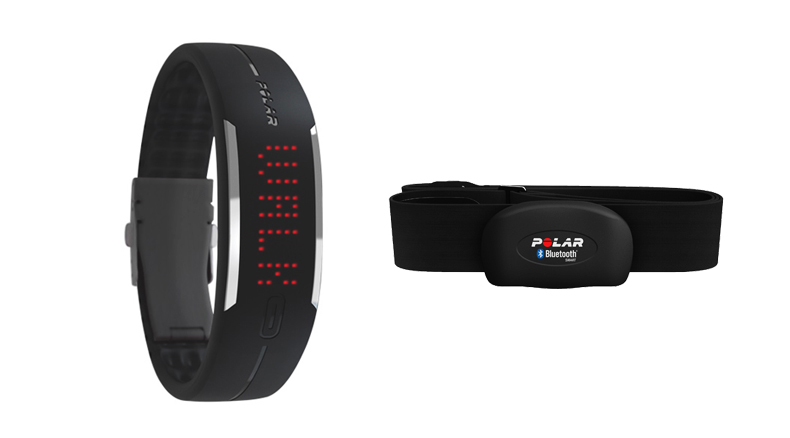
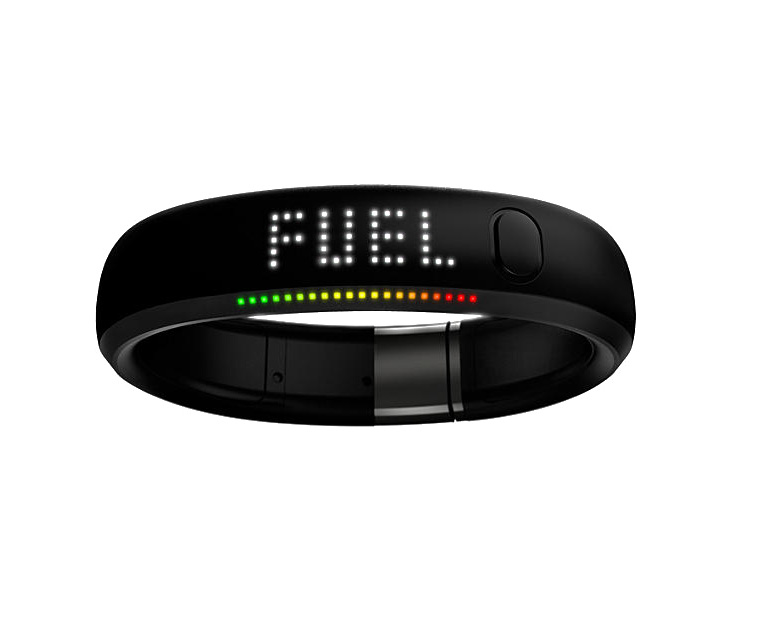
Fitness trackers are the latest rage but it’s a tricky and competitive market out there. The Nike+ FuelBand was met with much fanfare when it was released in November last year. However, interest didn’t live up the hype and Nike pulled the wrist-worn fitness tracker from its lineup. So far the company has remained silent as to where the FuelBand is going.
The Polar Loop has proven to be the go-to replacement for the Nike+ FuelBand. Back in 1982, this Finnish company was the first to create a heart-monitor in the form of a wristwatch back and they understand the fitness tracking market.
Shared design
The Polar Loop has a similar design to the Nike+ FuelBand – both have a hard rubber wristband with a display feature on top. However, the waterproof Loop is more streamlined and sleek. It’s got one simple array of red LED lights showing what option has been chosen. You activate the display and which screen to read by pushing the tiny button on the side.
 Custom sized band
Custom sized band
The Nike+ FuelBand comes in small, medium and large while the Polar Loop lets you custom fit the band to your wrist. This is the tricky part though.
The Loop is shipped with a gigantic band that you must cut down to size. Measure twice using the Polar Loop guide and cut once because if you cut off too much, well, your band is useless. The company does promise to send you a new one if you lop off too much but you’ll have to wait for delivery. There is a tutorial video showing you how to custom fit the band. Fortunately, this is the most difficult part of using the Polar Loop. The rest is fairly straightforward.
More than one way to reach your goal
The Nike+ FuelBand attracted a lot of attention for its tracking metrics for calories and steps taken. The Polar Loop uses a similar type of accelerometer technology to record your movements and then analyze the fitness info for frequency, intensity and regularity. It also shows you the time of day so you don’t have to wear your watch at the same time.
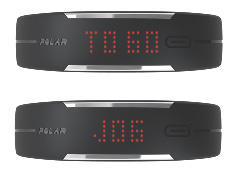 The TO GO option shows the activity and duration needed to achieve your daily fitness goals. You choose between low, medium or high intensity exercise options:
The TO GO option shows the activity and duration needed to achieve your daily fitness goals. You choose between low, medium or high intensity exercise options:
- Jog option: Covers high-intensity activities such as jogging, skipping, exercise class, soccer, basketball, football, tennis, handball or squash.
- Walk option: Covers medium-intensity activities such as brisk or speed walking, bowling, skateboarding, swimming, dancing or mowing the lawn.
- UP option: Covers the low-intensity activities such as cleaning, playing pool, walking the dog, Tai Chi, gardening or playing darts or the guitar.
The CALS option measures the calories burned as measured in kilocalories but also your basic metabolic rate and activity calories burned during the day. STEP measures the amount and type of movement and translates that into steps taken that day. The basic recommendation is at least 10,000 steps or more per day. Similar to the FuelBand, the Polar Loop has an inactivity warning that reminds you to get up a move every hour. It doesn’t give you points for getting up and moving as does the FuelBand.
Easy set-up
Both products must be set up via your computer using an integrated USB connector. While the FuelBand has its USB port at the end of the bracelet, the Polar Loop connector is found on the inside of the band. It serves as a dual function, charging the bracelet while synching up your stats.
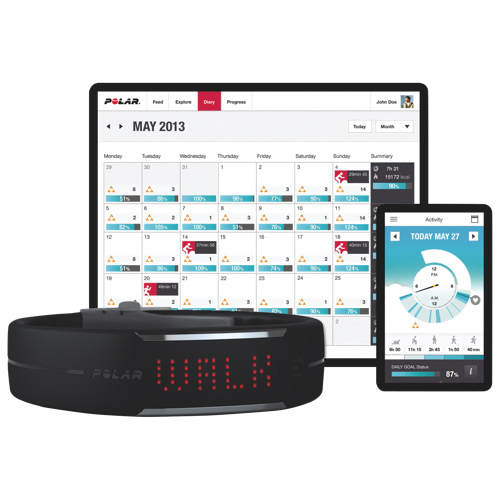 Create your Polar account and you can synch directly to the band. You can also use your smartphone by downloading the Polar App for either your iPhone or Android phone. Open the app and sign in with your Polar account. Wait for the Connect Device message to appear and then press the button on the Polar Loop. Once the display has turned off, the synch can begin.
Create your Polar account and you can synch directly to the band. You can also use your smartphone by downloading the Polar App for either your iPhone or Android phone. Open the app and sign in with your Polar account. Wait for the Connect Device message to appear and then press the button on the Polar Loop. Once the display has turned off, the synch can begin.
Unlike the FuelBand, the Polar Loop also offers Bluetooth Smart connectivity, starting with iPhone 4S and iPhone 5 series and iPod touch (5th gen. or newer) with iOS 6 operating system and newer. It’s also compatible with any device running Android 4.3 or later but without the Bluetooth option. You’ll have to synch using the computer. (Check which devices are supported on the Polar Loop support page.) Once your smartphone and Loop are paired, you can use your phone to check your stats and follow your current activity levels and achievements in real time. Automatic synching happens once an hour but you can also manually synch your Loop by tapping the touch button.
Battery Life
The Loop is quick to recharge when connected to the USB port and its battery lasts between six to seven days depending on how much you use its screen. The Nike+ FuelBand holds its charge for only four days at best, considerably less time that the Loop.
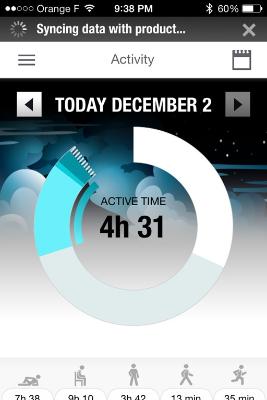 Easy to read stats
Easy to read stats
While the Nike+ FuelBand plots your fitness activity along a linear timeline, the Polar mobile App shows Activity Benefit as a circle so you can quickly see your stats. Underneath this activity pie chart is a listing of the Five Activity Zones and how much time you are spending in each zone (resting, sitting, low, medium and high. Scroll down further for the Advanced activity analysis to see the calories burned, steps taken, active time, inactivity alerts and sleep time. Transfer your daily activities and training into the Diary and you can get a weekly or monthly summary of how you are doing. This can be a great motivational tool. Read more about the Polar App features.
Tracking zzzz
The FuelBand promised to also track sleep session to show you how many Fuel points you earned. It turned out to actually give more points for restless sleep essentially defeating its purpose. The Polar Loop is more straightforward and simply calculates your sleep time without you needing to activate the activity. It estimates when you are sleeping by your wrist movements. Neither device has any kind of alarm systems or ability to give you a reminder when the inactivity alert goes off.
The Polar Loop is a great alternative to the Nike+ FuelBand, offering the same feature and at a more reasonable cost. Start tracking and meeting your fitness goals today!

